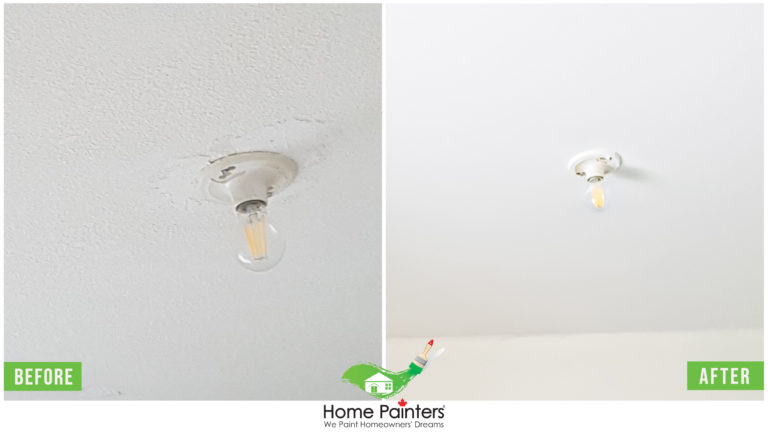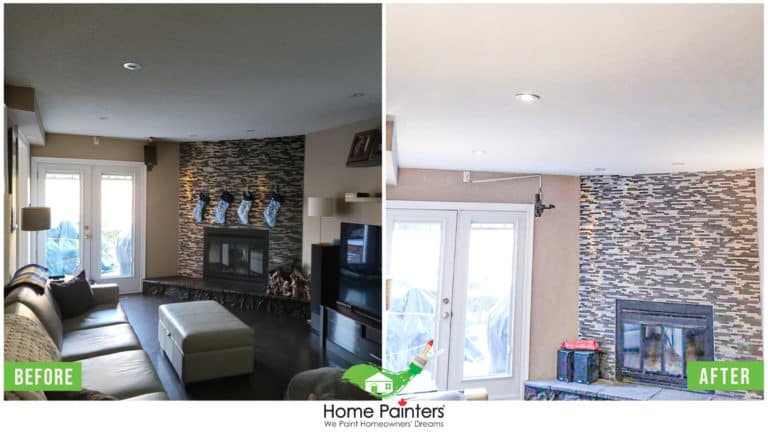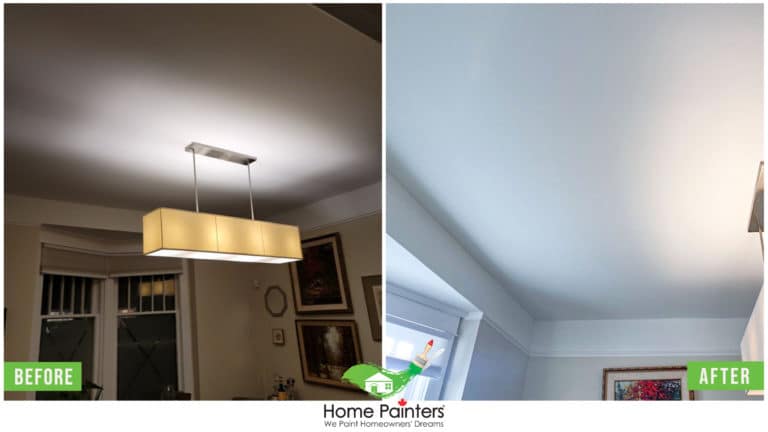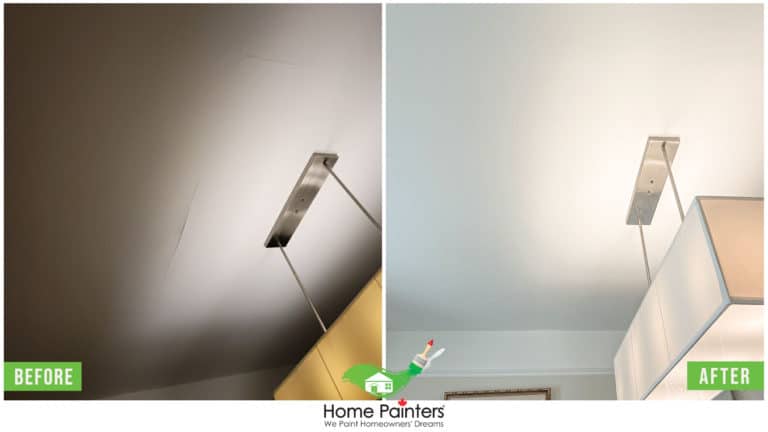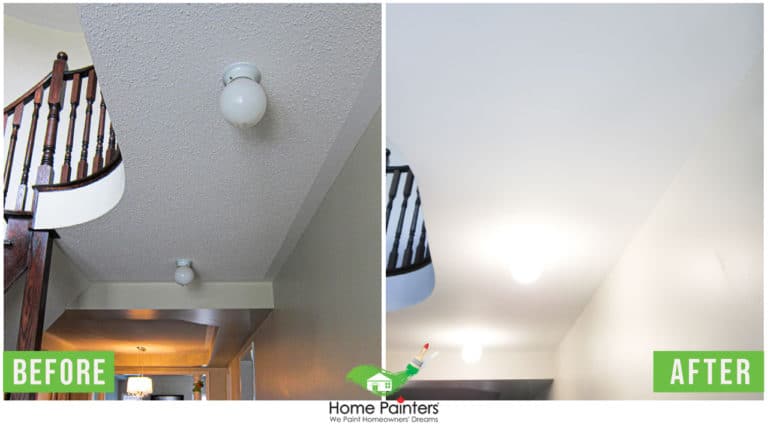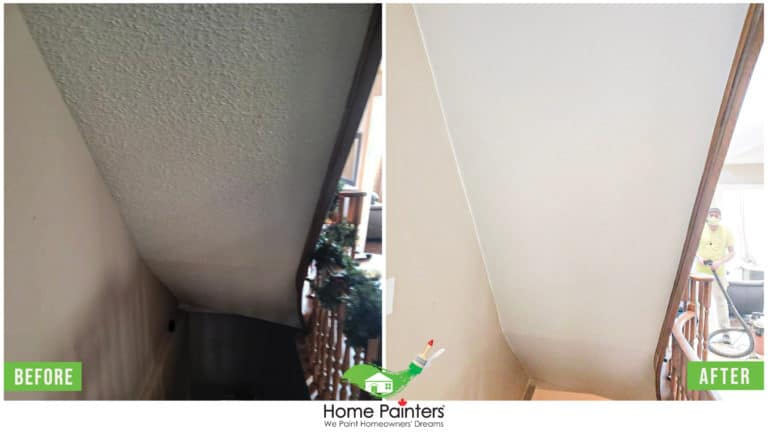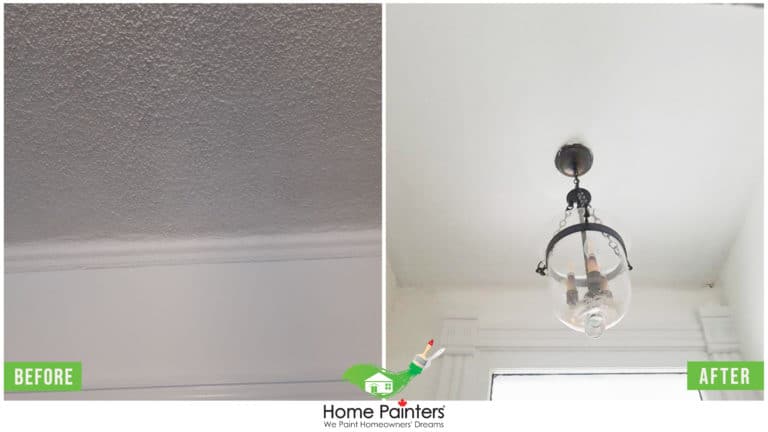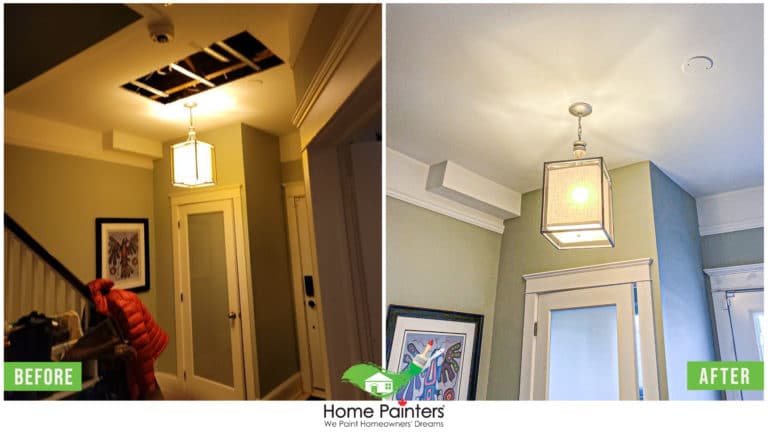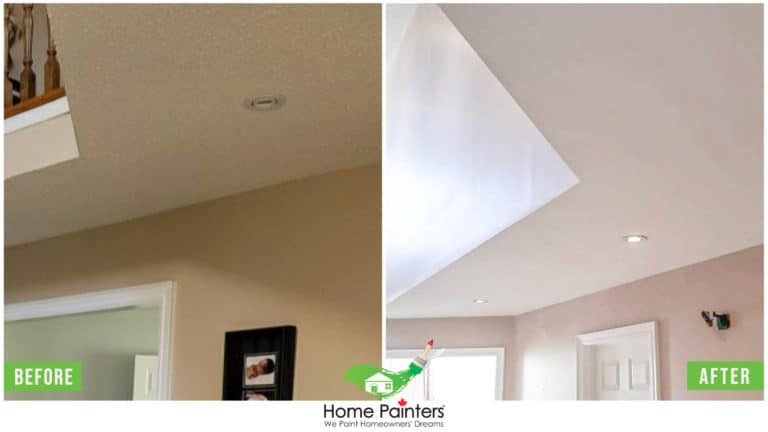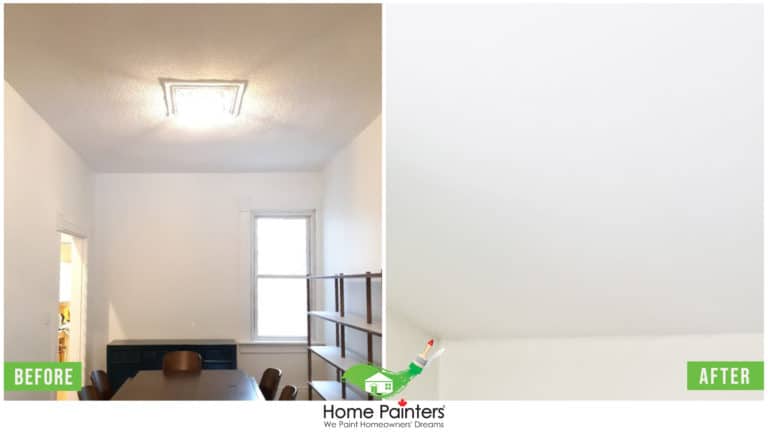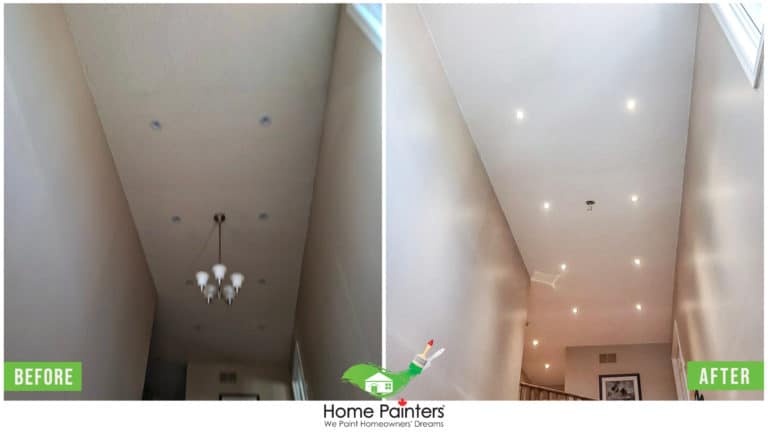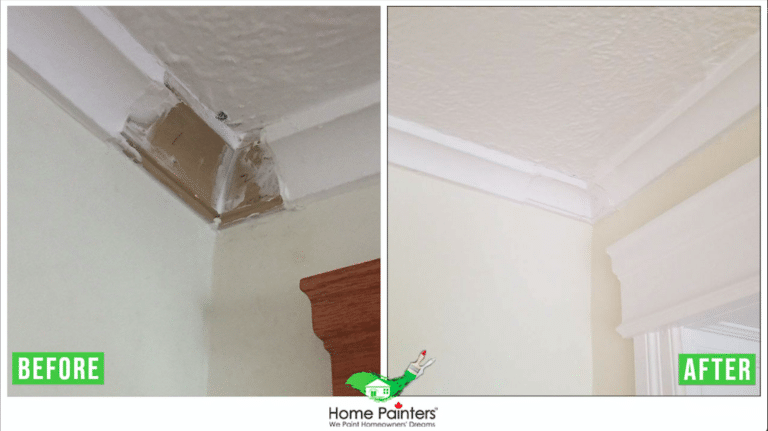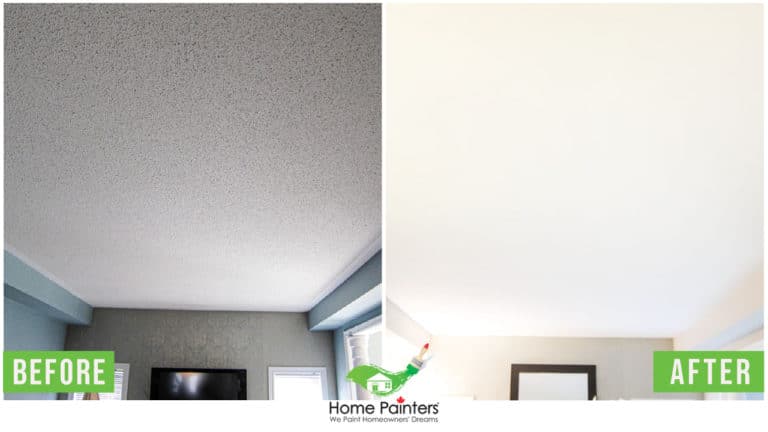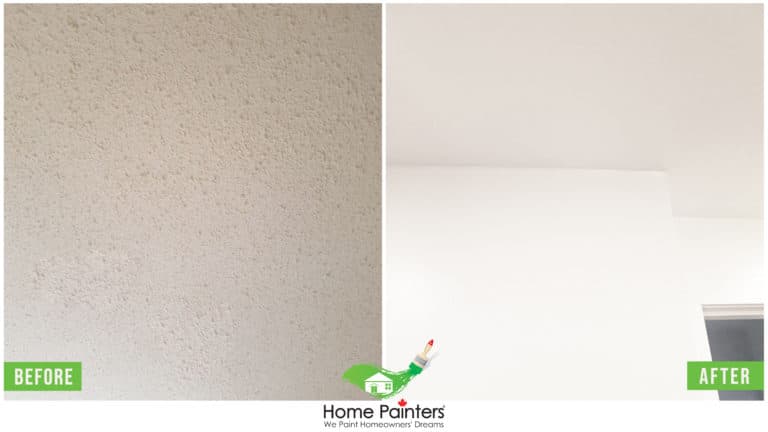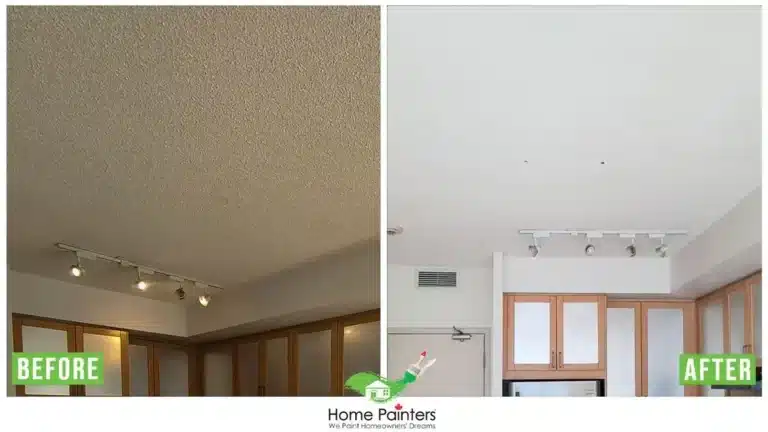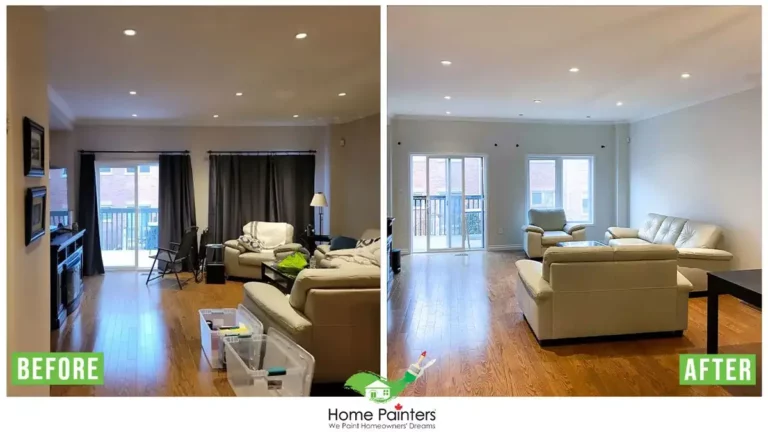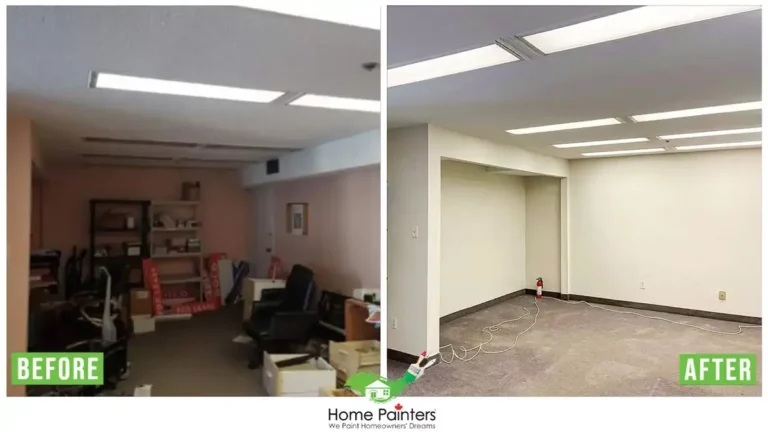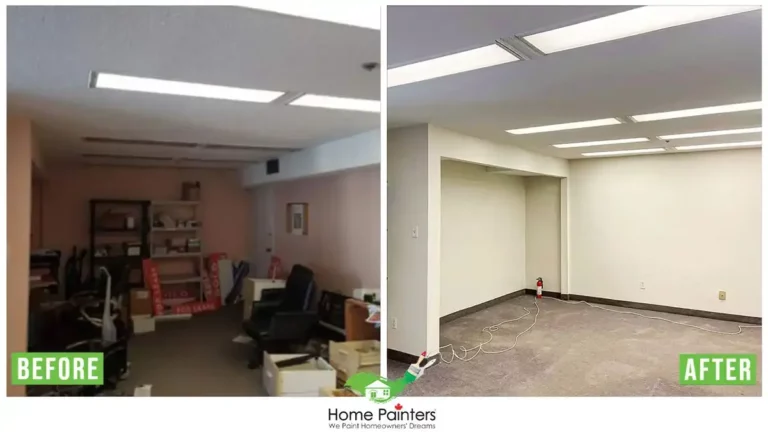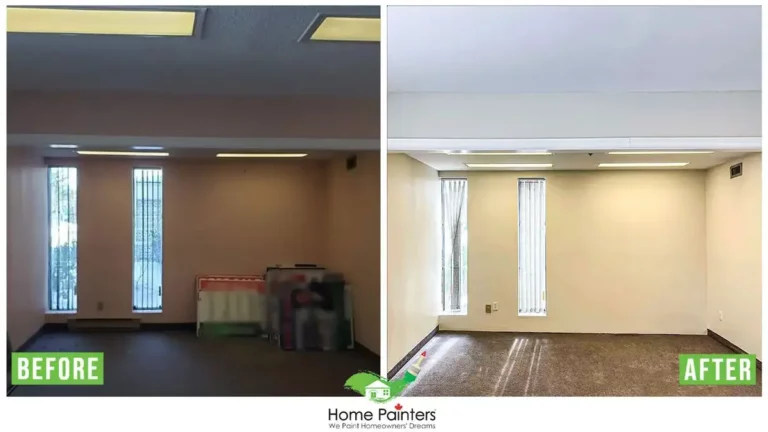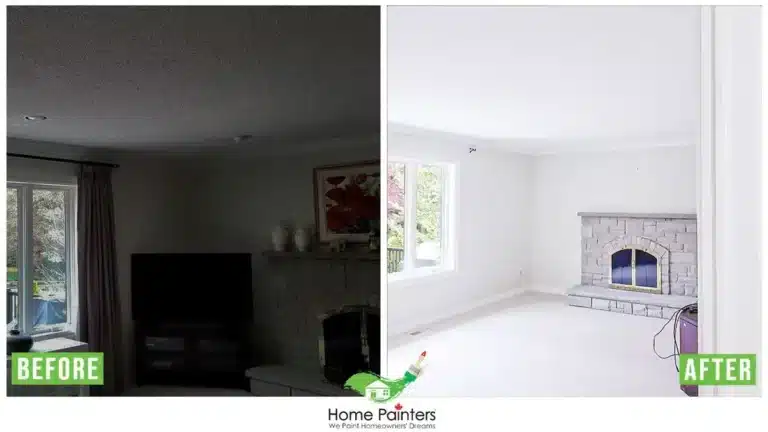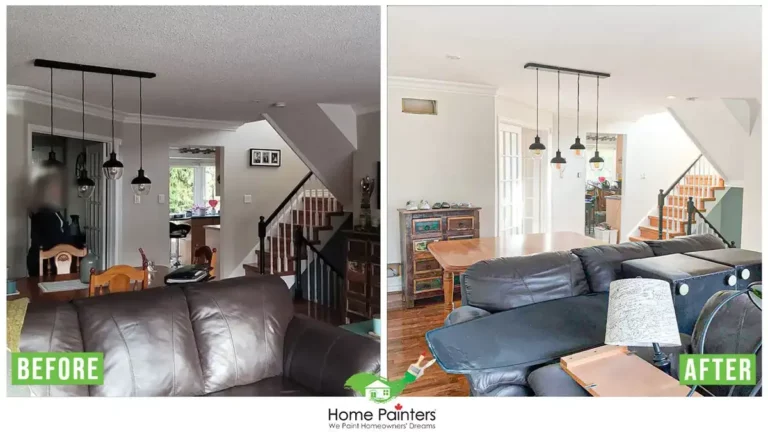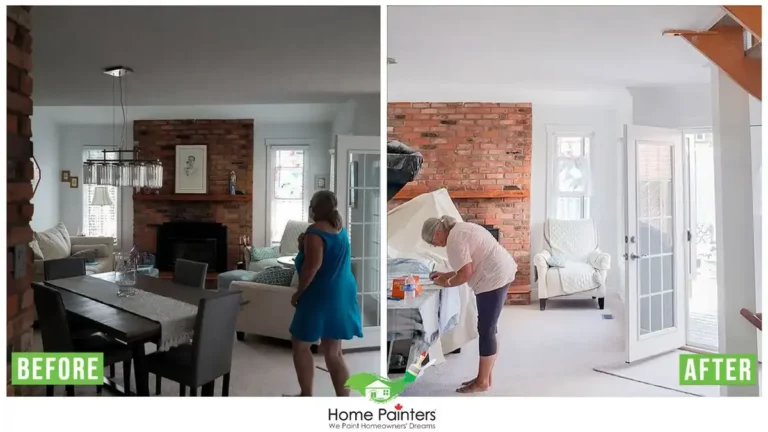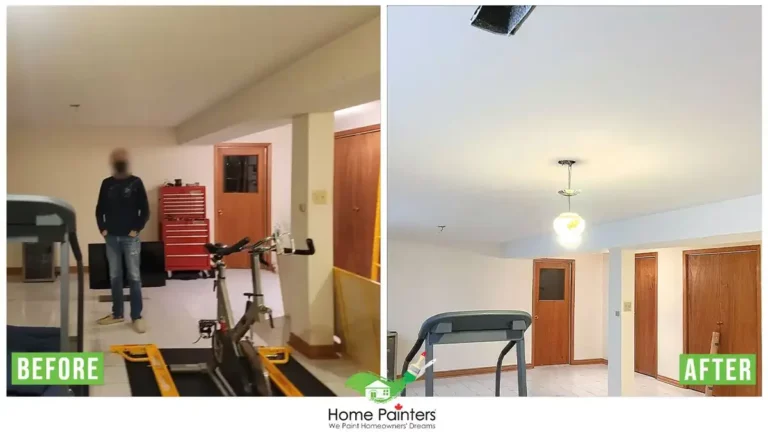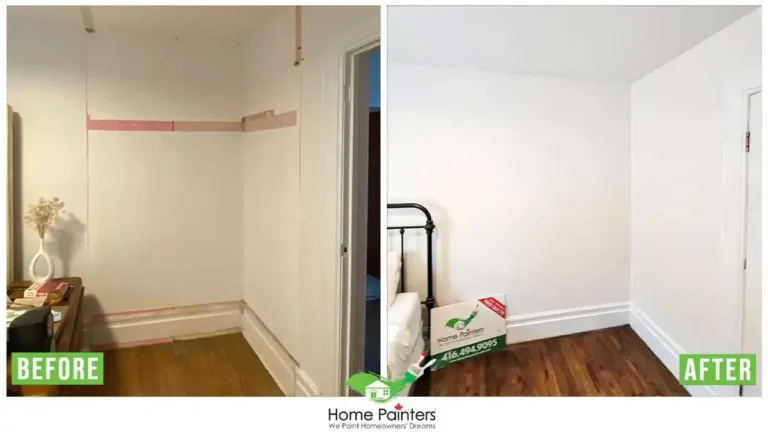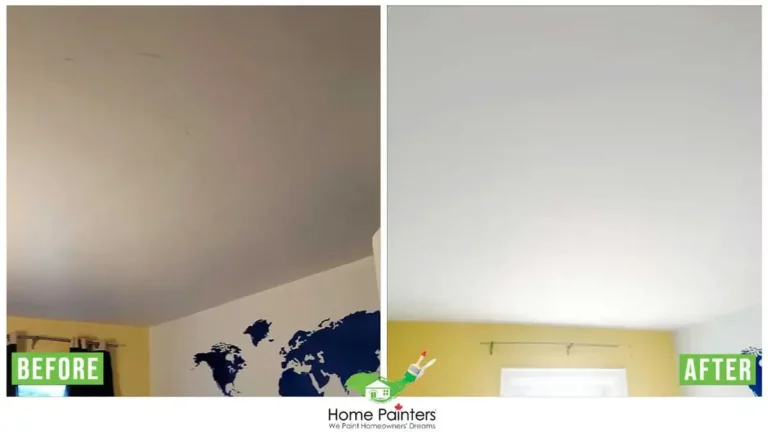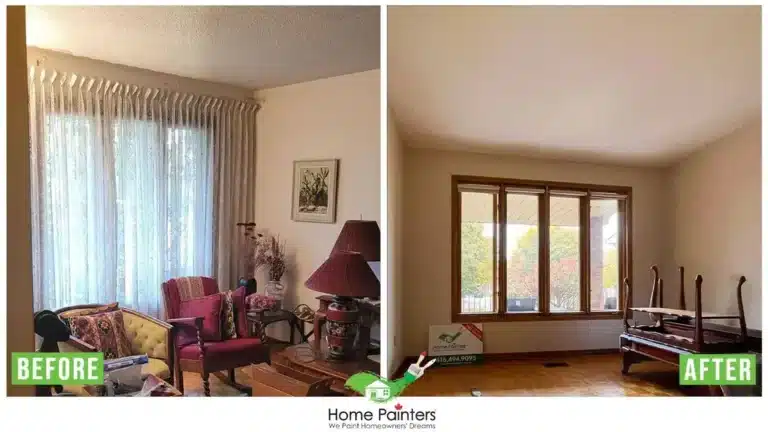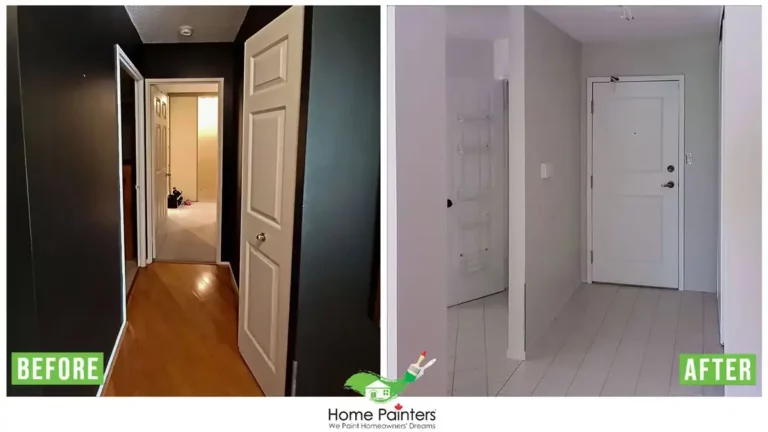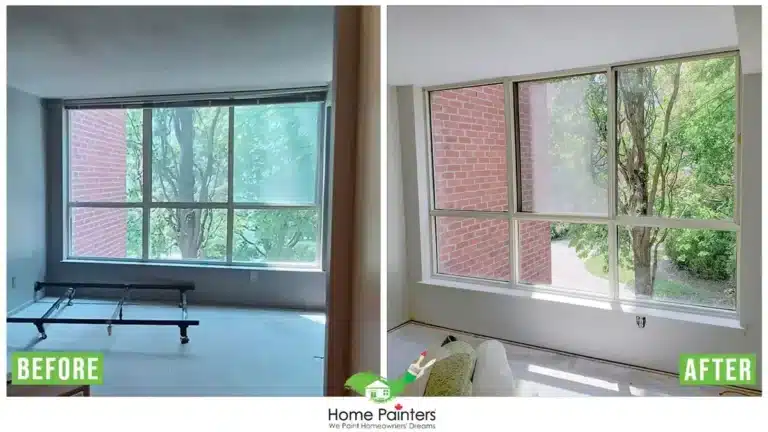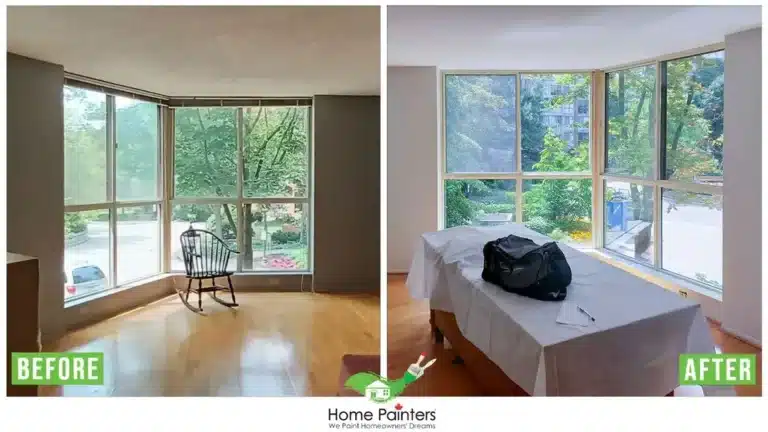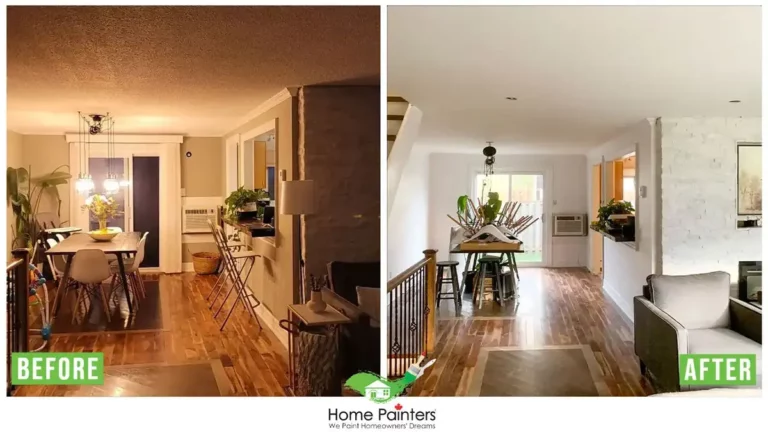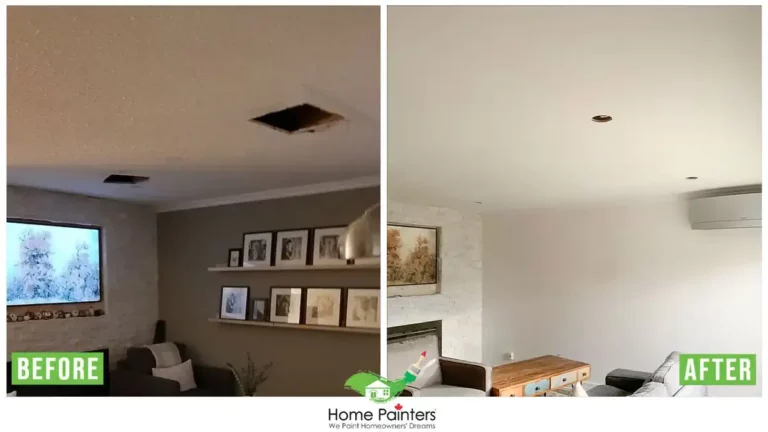
Peeling paint off walls and ceilings is not just an eyesore but can also indicate underlying issues. If you’ve been experiencing paint problems, you’re not alone. In this blog, we’ll explore six common reasons your wall and ceiling paint might be peeling and what you can do to prevent it from happening again. So, let’s dive right in!
6 Common Reasons Why Paint Peeling Off Walls and Ceilings
One of the most annoying and problematic things a homeowner can face is paint peeling. Peeling paint on walls and ceilings can be a head-scratching puzzle, particularly regarding the question, “Why is my ceiling paint peeling?” It doesn’t look good, and it makes a mess. More importantly, it can even cause some health issues, resulting in paint dust, chips, and other unsanitary debris.
It’s important to amend this issue as soon as possible, but there are various causes to why paint might peel off one’s walls or ceiling. Knowing the cause is necessary to prevent the same problem from recurring.
So, what could be the reason the paint keeps peeling off walls in your home?
1. Water Damage Affected the Area
If your wall or ceiling gets too much water, the paint gets penetrated and eventually separates from the surface. You’ll see heavily waterlogged areas with bulging and peeling paint throughout the surface.
This can happen with leaks, floods, and flashing, among other things. Sometimes, even if you splash a surface a little too often, you’ll start to see this effect.
2. There Is Too Much Humidity and Condensation
Do you notice your bathroom ceiling paint peeling? It may be due to too much humidity and condensation. If your bathroom is not well-ventilated, moisture builds up on your walls and ceiling, leading to cracking and chipping.
A more problematic possibility is the presence of mould and mildew, which thrive in damp spaces. If these grow underneath your paint coat, it will push the paint off the surface.
3. The Surface Was Unclean Before Being Painted On
Paint and dirty surfaces do not agree with each other. If your walls or ceiling are not cleaned before applying paint, it will likely bubble and fall off. This is because the oil, grease, and dirt build-up blocks any adhesion from the paint.
4. There Is Constant Sun Exposure and Heat
Intense sunlight is a real challenge for any type of paint. If the mixture is oil-based, it will likely start cracking from exposure. For elastic and latex paints, sun exposure causes them to contract and expand. This makes their adhesive bonds get weaker over time.
With sun exposure comes heat, which also weakens certain paint adhesives. Any constant exposure to high heat, such as from cooking areas, also hurts new paint. It makes their adhesive bond weak from the start.
5. The Paint Is Not Adherent to the Surface
Not all types of paint are compatible with every surface. The wrong combination will result in poor adhesion which can cause flaking and chipping pretty quickly. You have to think about curing and chemical reactions, so research should be done before picking a paint type.
Make sure you ask professionals or search online about the best kind of paint mix to use for the surface you have in mind.
6. The Surface Has Been Improperly Prepped
You can’t just pick a surface and then start painting over it right away. Aside from cleaning it up, you need to make sure it is smooth and primed.
If this action has been skipped, blistering will happen pretty quickly.
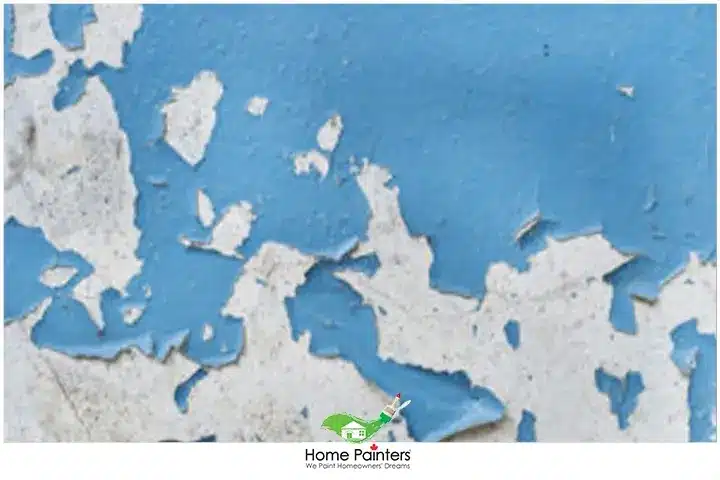
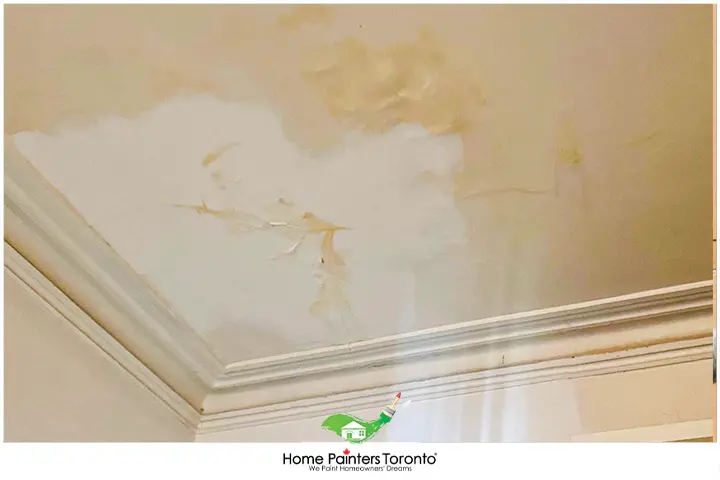
How to Fix Peeling Wall and Ceiling Paint
Step 1: Identify and Address the Root Cause
Any fix will only be temporary unless you identify and resolve the underlying problem causing the paint to peel. Are there water leak points or areas with excessive humidity? Are there issues with the quality of the previous paint job? Once you’ve identified these potential problems, you can take action, such as improving ventilation or fixing leaks, to stop the issue from reoccurring.
Step 2: Prepare your Working Area
Before you start, make sure to protect your furniture and the floor. Use a drop cloth or plastic sheet to cover the areas you wish to shield from any falling old paint or dust.
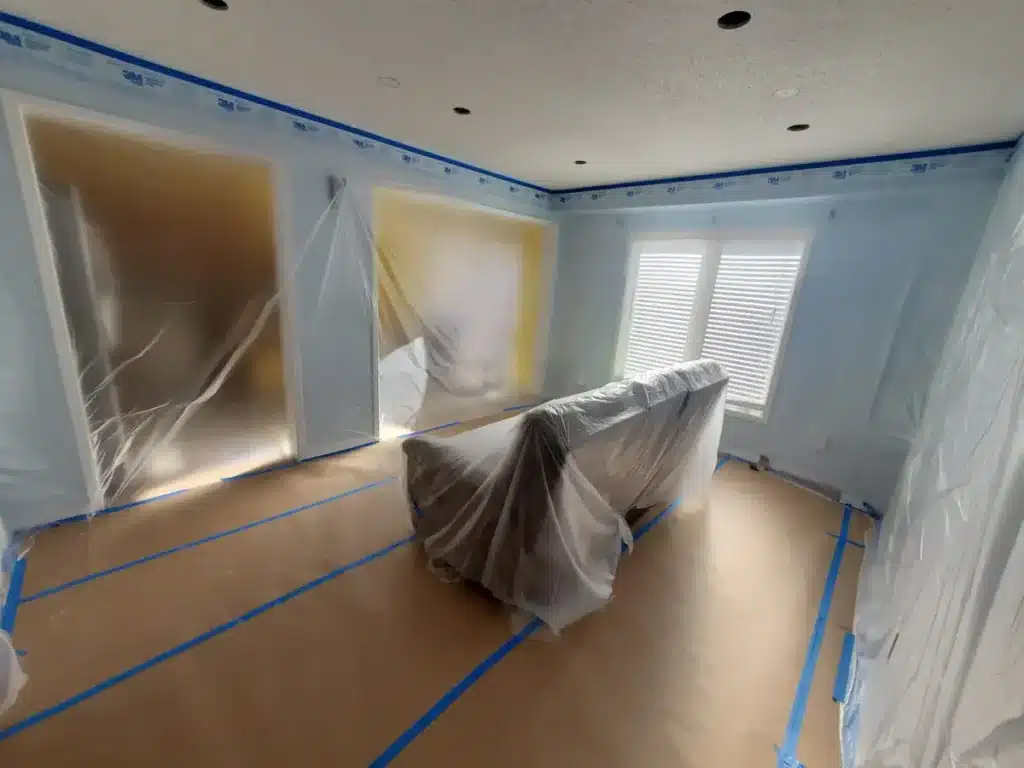
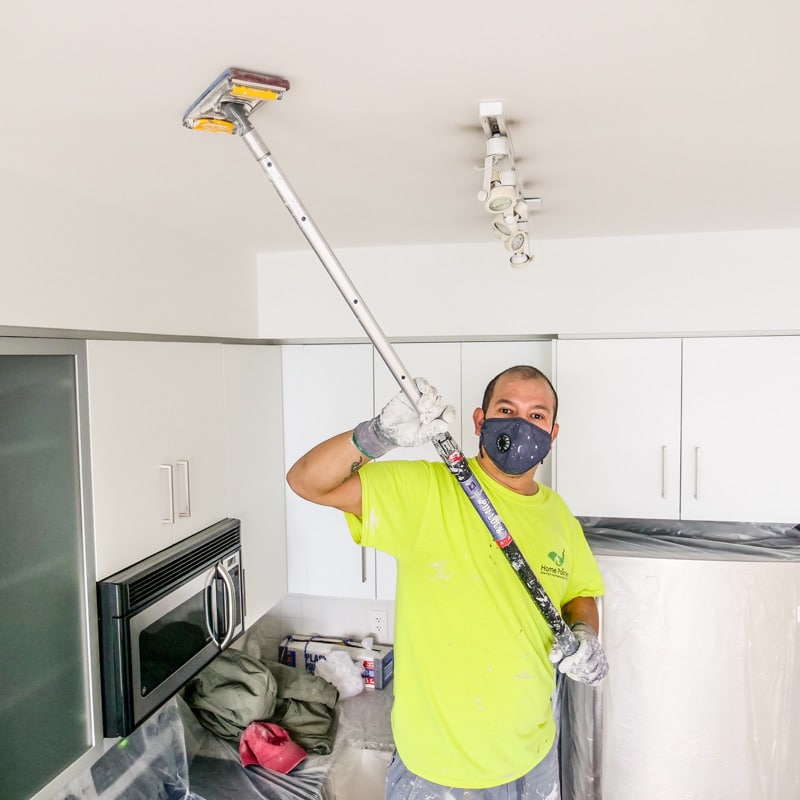
Step 3: Remove the Peeling Paint
Can you paint over peeling paint? The short answer is yes. However, we do not recommend doing so.
Peeling paint is a sign of something wrong with the surface below it. If you paint over it, you may disguise the problem but not eliminate it. The best thing to do is replace the peeling paint with new paint.
Use a scraper or putty knife to remove the peeling paint from the wall or ceiling. Be gentle to avoid gouging the surface underneath.
The goal is to remove the loose paint, ready to detach from the wall or ceiling.
Step 4: Sand the Area
Once the loose paint is removed, you’ll need to smooth out the area to ensure the new paint layers will adhere properly. Start with coarse-grit sandpaper to remove the remaining flaky paint, then switch to a finer grit to smooth the surface.
Step 5: Clean the Surface
After sanding, a significant amount of dust will be left on the surface. Wipe the wall or ceiling down with a damp cloth to remove all the dust. The surface must be clean and dry before proceeding to the next step.
Step 6: Apply a Primer
Primer plays a key role in providing a suitable surface for paint to adhere to. Especially on surfaces that have had paint peeling issues, using a high-quality primer is important. It seals imperfections and ensures a good grip for the new paint. Let the primer dry completely before moving on to the final painting stage.
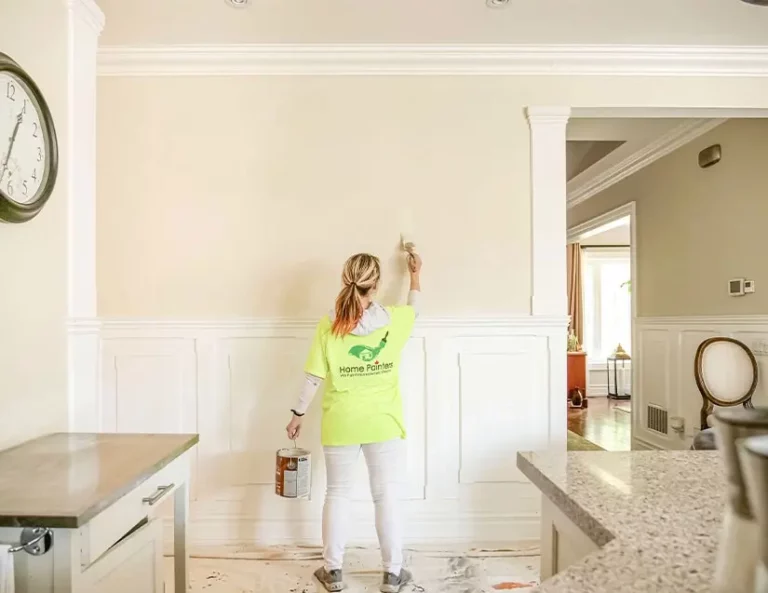
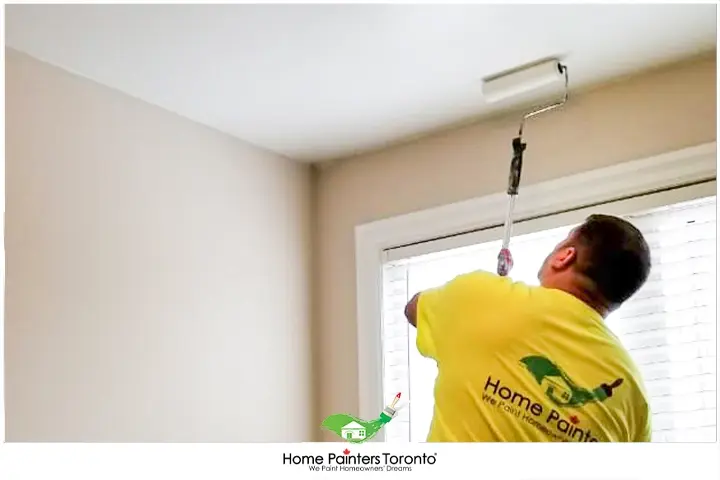
Step 7: Paint the Area
Finally, it’s painting time. Apply at least two coats of paint, letting it dry after every layer. Make sure to use a paint type suitable for your surface to avoid a recurrence of the peeling problem. For ceilings, use a paint specially formulated for overhead use.
Step 8: Maintain a Good Condition
After finishing the painting job, it’s essential to maintain the area to prevent future peeling. Regularly check for water leaks, control humidity, and ensure the area is well-ventilated.
Final Thoughts
Keeping your paint from peeling may seem challenging, but understanding the common reasons for peeling and taking the necessary preventative measures can help you maintain a beautiful and lasting finish.
Additionally, the process of fixing peeling paint requires time and patience, but the result is worth it. You can not only preserve the aesthetic quality of your home, but you’ll also extend the lifespan of your walls and ceiling. Dive in, trust the process, and you can save your interiors from falling flakes of paint.
More Interesting Blogs Related to
“6 Reasons Your Wall and Ceiling Paint Keeps Peeling”
If you’re suffering from this issue and want professional solutions, Home Painters Toronto serves residential and commercial properties. We have the best painting contractors in Toronto ready for interior and exterior painting needs. Contact us for a FREE estimate today!
Call 416.494.9095 or email [email protected]. Also, don’t forget to check and follow us on our social media channels below!


